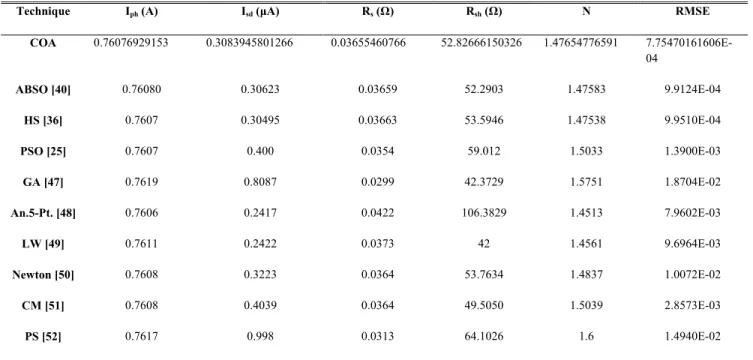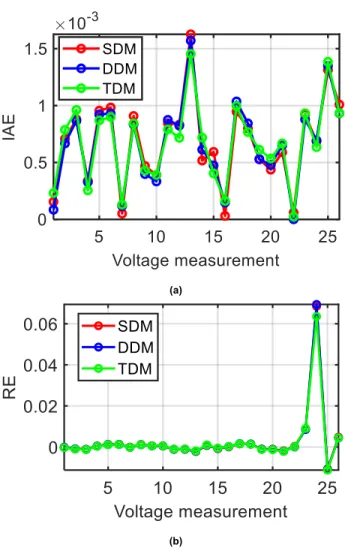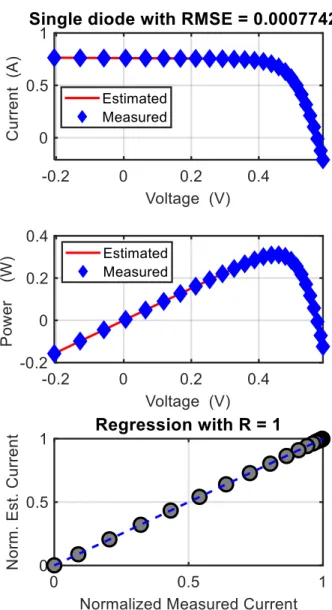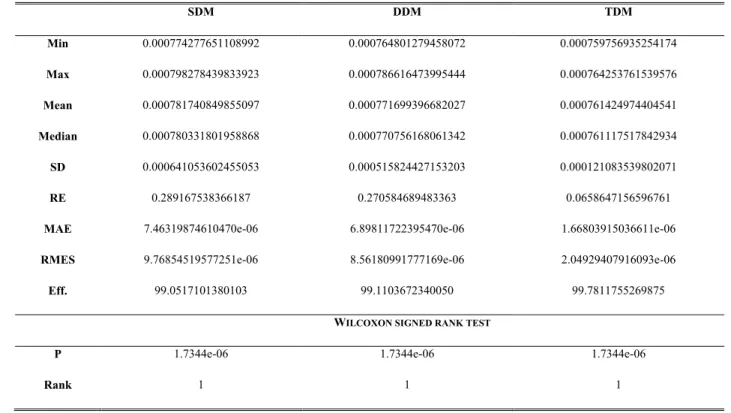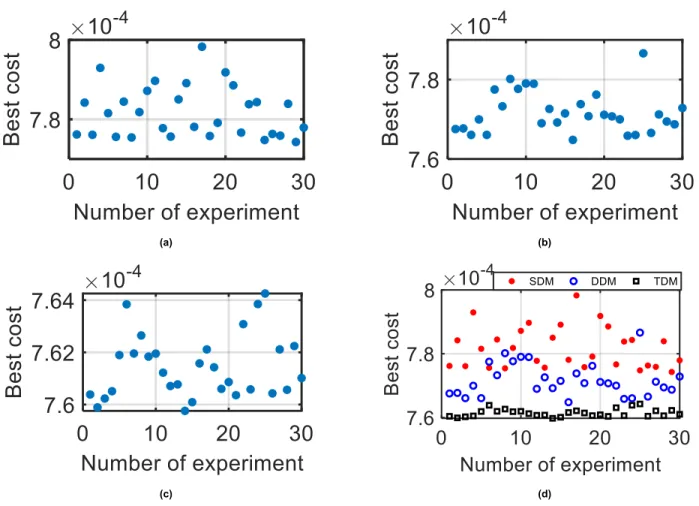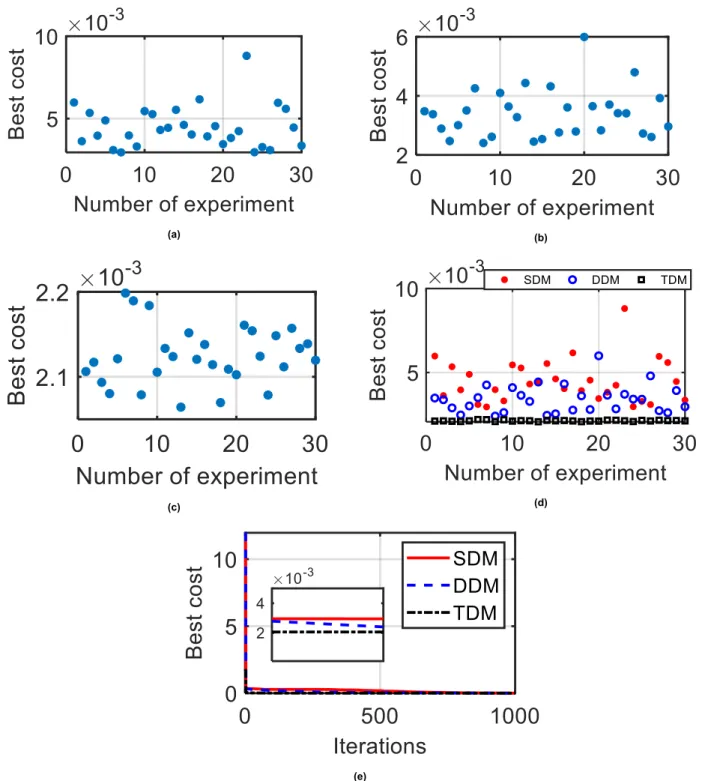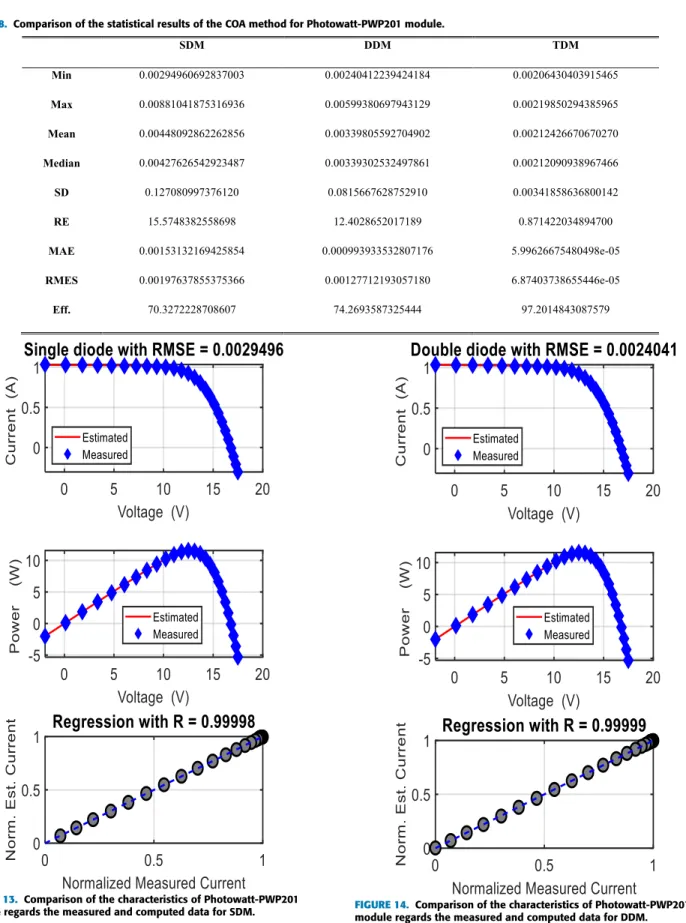The design procedure of the SC mainly depends on the corresponding mathematical model of the SC itself. The TD model incorporates nine parameters to model and stimulate the behavior of the SC and PV modules. Lambert W function was reported in [17], which has been used to extract the parameters of the DD model.
In [24], the genetic algorithms (GA) were used to improve the accuracy of parameter estimation for the DD model of the PV modules and SC. This algorithm is called the Simulated Annealing (SA) method, which was used to determine the parameters of the SD and DD model of SC and PV modules. Comparison of the properties of RTC France solar cell based on measured data and calculated using SDM.
Comparison of the characteristics of the RTC France solar cell based on measured and estimated data using DDM. Comparison of the characteristics of the RTC France solar cell based on measured and estimated data using TDM. Comparison of the characteristics of the Photowatt-PWP201 module concerns the measured and calculated data for SDM.
The comparison of the characteristics of the Photowatt-PWP201 module is about measured and calculated data for DDM.
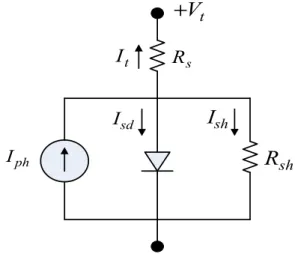
RESULTS AND DISCUSSION
Continued.)The estimated parameters for the three PV modules by COA under different intensities of solar radiation and temperature of 25◦C (SDM). Statistical measurement of the COA technique for the three PV modules under different intensities of solar radiation and temperature of 25◦C (SDM). Continued.)Statistical measurement of the COA technique for the three PV modules under different intensities of solar radiation and temperature of 25◦C (SDM). The table shows that the applied COA optimization technique produces the best results with the minimum objective function of the RMSE, namely E-04.
For more validation, the COA algorithm has been applied to extract the parameters of TDM. The results of the applied COA algorithm have been compared with the results of other ABC techniques [42], OBWOA [55], STBLO [48]. Also, a comparison between the results of the three different models of SDM, DDM and TDM based on COA.
6 and Tables 1, 2 and 3, it is noticeable that the convergence curve of the TDM is better than that of SDM and DDM. However, the results of the SDM and DDM are better than those of the reported methods from the literature, as shown in Fig. Error curves of the estimated and measured current data of the RTC France solar cell for the three models, based on the indices of individual absolute error values (IAE) and relative error values (RE), are shown in Fig.
7 to confirm the accuracy of the optimized parameters and the power of the optimization technique used. A statistical analysis should be performed to be able to trust the effectiveness of the optimization technique and to assess the robust behavior of the COA. The results of the statistical analysis of the use of the applied COA for the three different models are listed in Table 4.
The results of the statistical analysis prove that the COA algorithm is an effective algorithm for solving the optimization problem of identifying the parameters of various mathematical models of R.T.C. Furthermore, the Wilcoxon signed rank test has been applied for more validation of the applied algorithm. The results of the P values in Table 4 generated by the Wilcoxon test indicate that the COA results are statistically significant.
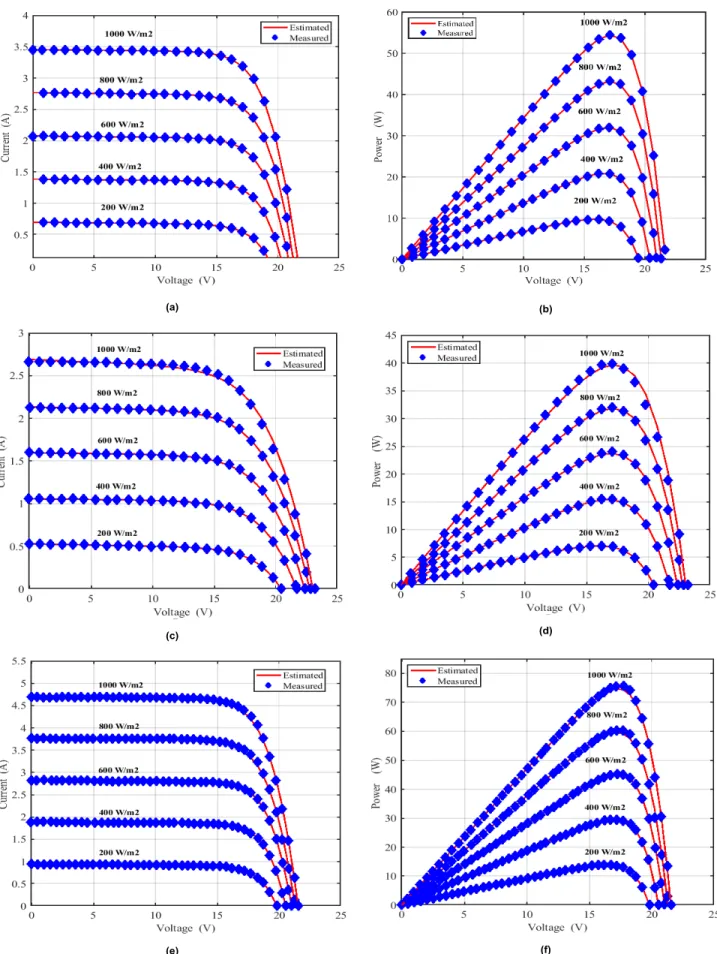
CASE STUDY 2; PHOTOWATT-PWP201 MODULE For more validating of the applied COA technique,
Cont.)Estimated parameters for the three PV modules based on COA at different intensities of solar radiation and temperature of 25◦C (DDM). Statistical measurements of the COA technique for the three PV modules under different solar radiation intensities and 25◦C temperature (DDM). In continuation.)Statistical measurements of the COA technique for the three PV modules under different solar radiation intensities and 25◦C temperature (DDM). The RMSE based on the application of COA to extract the SDM parameters is equal to E-3 which is the best.
For greater validation, COA is used to estimate the parameters of the DDM and TDM models of the Photowatt-PWP201 PV module. The optimized DDM and TDM parameters based on the COA were presented in Table 6 and Table 7, respectively. In addition, Table 7 shows the COA results for the TDM model parameter extraction for the Photowatt-PWP201 PV module, and the RMSE value is E-03.
All the results presented in Tables 5 to 7 prove that the COA is effective with high accuracy in estimating the parameters of different models of the Photowatt-PWP201 PV module, which is reflected in the reduction of the RMSE value as an objective function. The RMSE convergence characteristics for the Photowatt-PWP201 module based on the COA optimization method according to the three models used are shown in the figure. Estimated parameters for three COA-based PV modules at different solar radiation intensities and 25◦C temperature (TDM). Cont.) Estimated parameters for three PV modules based on COA at different intensities of solar radiation and a temperature of 25 °C (TDM).
The optimized parameters for SDM, DDM and TDM are applied to plot the estimated I-V and P-V. The measured and estimated COA-based curves are visualized in Figures 13 to 15 for the SDM, DDM, and TDM models, respectively. Statistical measurements of the COA technique for the three PV modules with different solar radiation intensities and 25◦C temperature (TDM). In continuation.)Statistical measurements of the COA technique for the three PV modules with different solar radiation intensities and 25◦C temperature (TDM).
Furthermore, the regression between the calculated and experimentally measured curves is 1, confirming the COA-based methodology. The table shows that the COA algorithm has acceptable statistical analysis indices such as standard deviation (SD) and relative error (RE) for the three evaluated models. However, the COA results are best for the SDM and TDM cases.
CASE 3. DIFFERENT TYPES OF PV MODULES
The results of the extraction parameters of the SDM for the three PV modules under different intensities of solar power. The table shows that under each intensity of solar radiation, the COA optimization algorithm is able to estimate the parameters of SDM with acceptable values of RMSE for each PV module. Comparison of the statistical results of the COA method for Thin Film ST40 under various values of temperature and 1000 W/m2.
The estimated parameters using the COA method for Multi-crystalline KC200GT under different values of temperature and 1000 W/m2. For further validation of the COA-based estimator; a comparison of the statistical results of the COA method for the three PV modules below. Comparison between experimentally measured data and the estimated results by COA at different temperatures for multicrystalline KC200GT module: (a) I-V curves (SDM), (b) P-V curves (SDM), (c) I-V curves (DDM), (d) ) P-V curves (DDM), (e) I-V curves (TDM), (f) P-V curves (TDM).
Comparison of statistical results of the COA method for multicrystalline KC200GT at different values of temperature and 1000 W/m2. For DDM Table 11 shows the extracted DDM parameters of three PV modules at different intensities of solar radiation and a temperature of 25 ◦C. The results show a good agreement between the estimated and data characteristics at different intensities of solar radiation.
Furthermore, the parameters of TDM for each PV module have been estimated based on the optimization algorithm of COA. 18 shows that the estimated characteristics of each solar module have a good agreement with the actual characteristics under the different intensities of solar radiation.
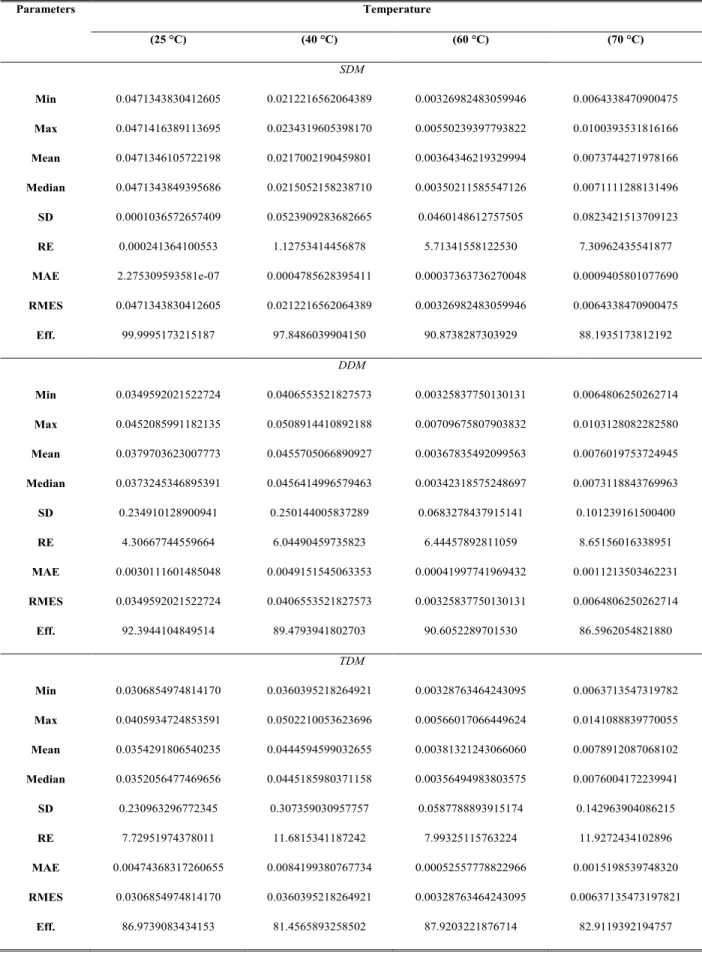
OPERATION UNDER DIFFERENT TEMPERATURES
CONCLUSION
Boutrit, “Nonlinear minimization algorithm for determining solar cell parameters with microcomputers,” Int. Muci, ‘‘New method for extracting model parameters of solar cells from explicit analytical solutions of their illuminated I–V characteristics,’’ Sol. Phang, “A comparative study of extraction methods for solar cell model parameters,” Solid-State Electron., vol.
Yu, “Lambert W-function based exact representation for dual diode model of solar cells: Comparison on fitness and parameter extraction,” Energy Convers. Di Gangi, ''A procedure to calculate the five-parameter model of crystalline silicon photovoltaic modules on the basis of the tabular performance data,'' Appl. Car-roll, ``Evaluation of methods for extracting parameters from current-voltage characteristics of solar cells,'' Sol.
Mimouni, “Particle swarm optimization with adaptive mutation strategy for solar cell/photovoltaic module parameter extraction,” Energy Convers. Ella Hassanien, “Photovoltaic cell parameter estimation using an improved chaotic whale optimization algorithm,” Appl. Chebbi, “Identification of unknown parameters of solar cell models: A comprehensive review of available approaches,” Renovo.
Oliva, ''Parameter estimation of solar cell diode models by an improved opposition-based whale optimization algorithm,''. Wang, ‘‘Parameter identification of photovoltaic models using an improved JAYA optimization algorithm,’’ Energy Convers. Li, ‘‘An improved TLBO with elite strategy for parameter identification of PEM fuel cell and solar cell models,’’ Int.
Papathanassiou, “A method for the analytical extraction of the PV model parameters with one diode,” IEEE Trans. Souza, “A new powerful method for determining the parameters of PV cells and modules based on guaranteed convergence of particle swarm optimization,” Appl. Jordehi, “Time-varying acceleration coefficients particle swarm optimization (TVACPSO): a new optimization algorithm for estimating parameters of PV cells and modules,” Energy Convers.
